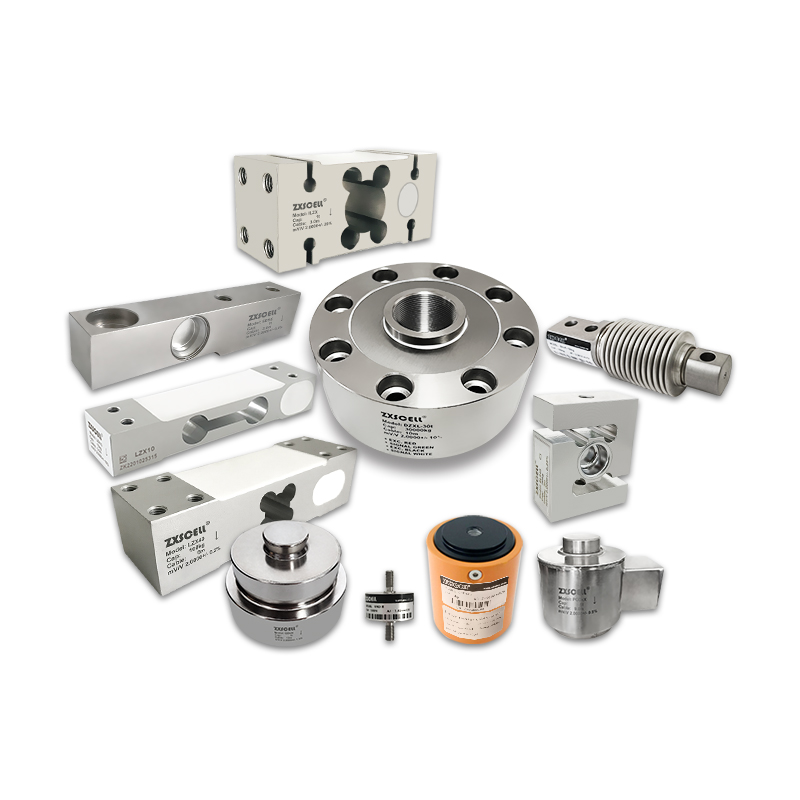push time:2023-06-26 Popularity: source:1
The weighing sensor needs to undergo appropriate selection in order to achieve its best performance.Selection of weighing sensorsIt is necessary to comprehensively consider the structural form, quantity, range, measurement accuracy, and usage environment.
1、 The structural form of the weighing sensor
Generally, sensors with corresponding structural forms are selected based on the structure of the weighing equipment, i.e. the installation position of the sensors. Common weighing sensor structures include cantilever beam type, corrugated pipe type, single point type, S-type tension and compression type, column type, spoke type, pivot pin type, and so on.

2、 Selection of the number and range of weighing sensors
Generally speaking, a few sensors are selected for a scale body with several support points, but for some special scales such as electronic hook scales, only one sensor can be used. For some electromechanical combined scales, the number of sensors should be determined based on the actual situation.
The selection of weighing sensor range can be determined based on a comprehensive evaluation of factors such as the maximum weighing value of the scale, the number of sensors selected, the self weight of the scale body, the possible maximum bias load, and dynamic load. Generally speaking, the closer the range of a sensor is to the load assigned to each sensor, the higher the accuracy of its weighing.
3、 Measurement accuracy requirements
The accuracy level of weighing sensors includes technical indicators such as nonlinearity, creep, creep recovery, hysteresis, repeatability, sensitivity, etc. When selecting weighing sensors, do not simply pursue high-level sensors, but consider both meeting the accuracy requirements of the electronic scale and considering its cost.
4、 The environment in which the weighing sensor is used
(1) Corrosive environment
This environment will cause damage to the elastic body of the weighing sensor or generate short circuits and other effects. Therefore, sensors with sprayed plastic or stainless steel covers on the outer surface, good corrosion resistance, and good airtightness should be selected.
(2) Temperature
The strain gauge sensor uses a special adhesive to stick the measuring bridge of the strain gauge onto the elastic body. Therefore, higher temperature environments will cause the sensor to experience problems such as weakened adhesive, aging, open solder joints, and structural changes in the stress inside the elastic body. Therefore, it is necessary to choose a suitable sensor based on the temperature requirements of the sensor installation environment. For sensors operating in high-temperature environments, high-temperature resistant sensors are often used; In addition, insulation, water cooling, or air cooling devices must be added.
(3) Dust, moisture
Under these environmental conditions, weighing sensors with high airtightness should be selected. Common seals include sealant filling or coating; Mechanical fastening and sealing of rubber pads; Welding (argon arc welding, plasma beam welding) and vacuum nitrogen filling sealing. From the perspective of sealing effect, welding sealing is the best, and filling and coating with sealant is the difference in quantity. For sensors operating in clean and dry indoor environments, adhesive sealed sensors can be selected, while for sensors operating in humid and dusty environments, sensors with membrane hot sleeve sealing or membrane welding sealing, vacuum pumping and nitrogen filling should be selected.
(4) Electromagnetic interference
Choose a weighing sensor with good resistance to electromagnetic interference.
(5) Flammable and explosive environment
Load cells that meet the corresponding explosion-proof level must be selected for use in this environment.
5、 Meet the accuracy requirements of the entire electronic scale
An electronic scale is mainly composed of three parts: the scale body, sensors, and instruments. When selecting the accuracy of the symmetrical weight sensor, the accuracy of the sensor should be slightly higher than the theoretical calculation value, because theory is often limited by objective conditions, such as poor strength of the scale body, poor performance of the instrument, and harsh working environment of the scale, which directly affect the accuracy requirements of the scale, Therefore, it is necessary to improve the requirements from all aspects, while also considering economic benefits to ensure the achievement of the goal.
Sales hotline:
Miss Chen: 18520271262
Miss Xie: 18688494254
Mr. Huang: 18688492451
Working hours:
Monday to Saturday9:0018:00
